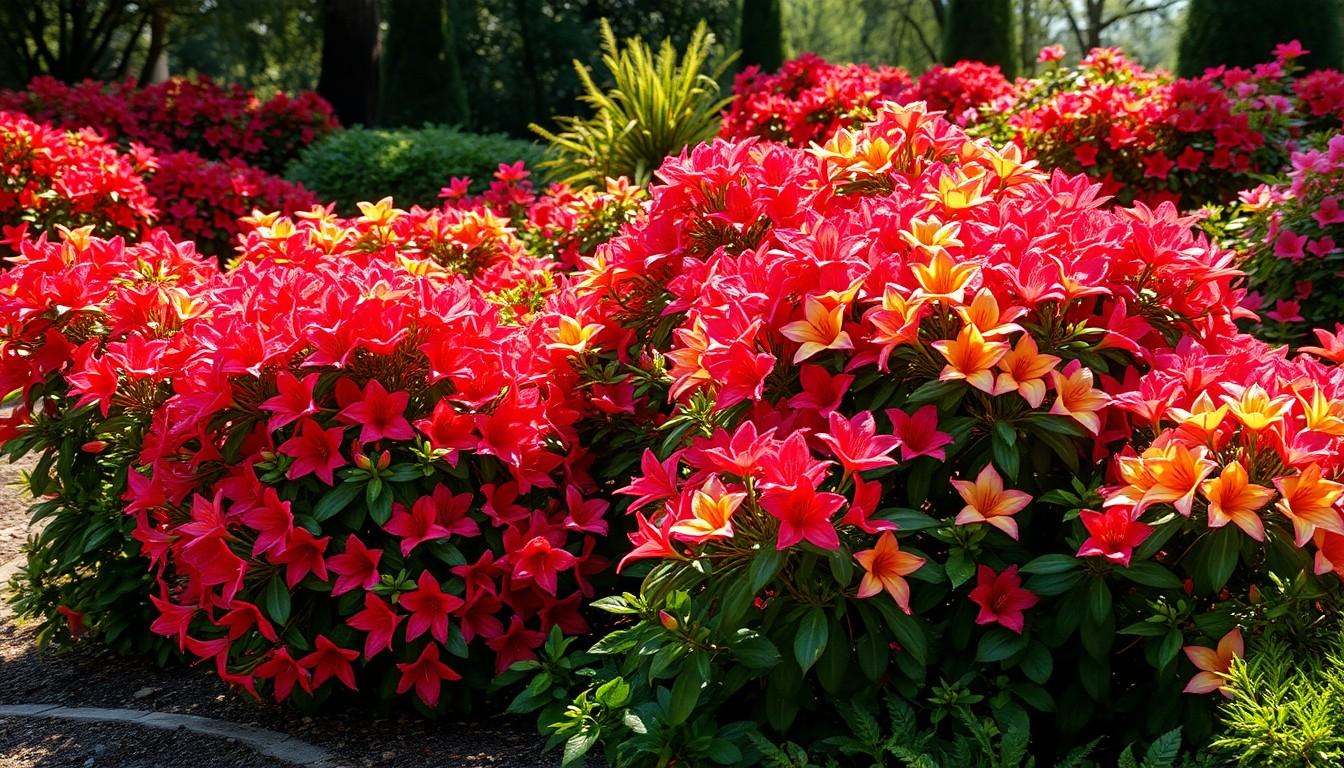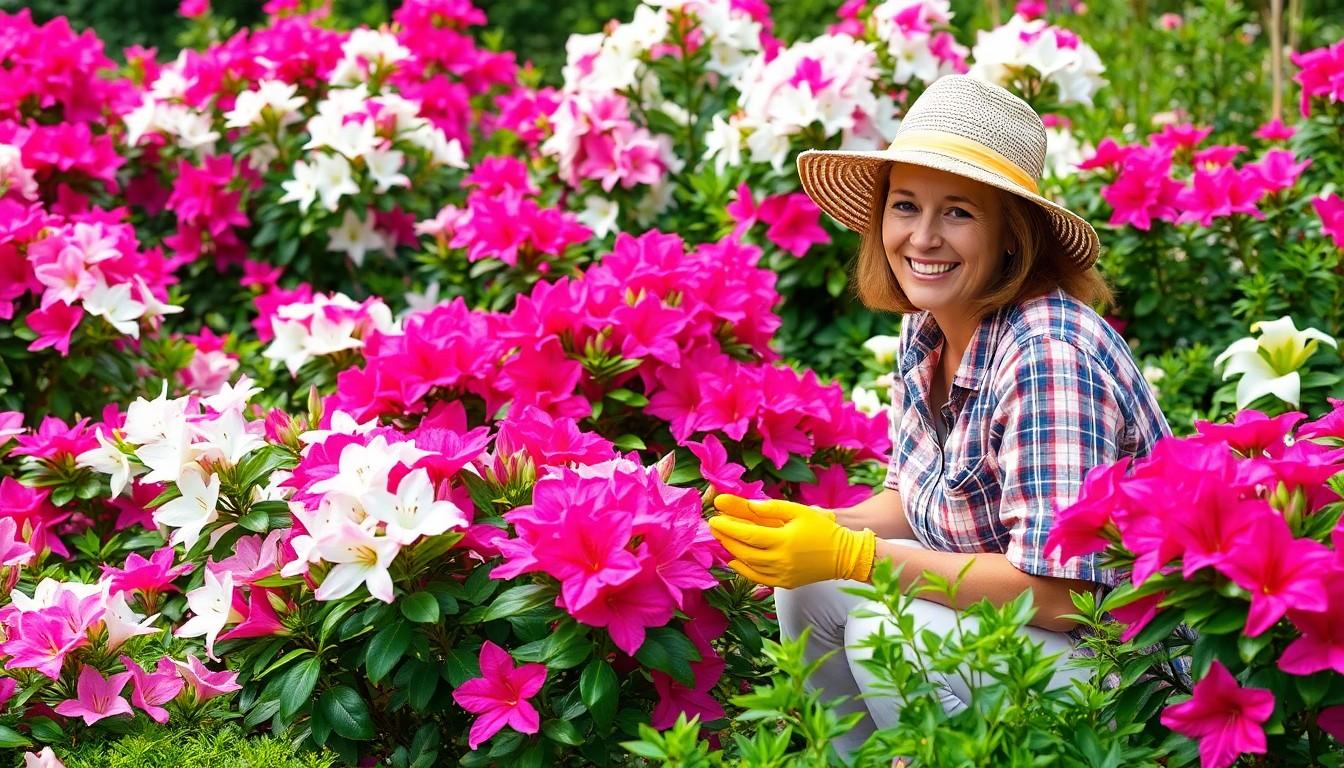Transforming a garden with azalea bushes is like adding a splash of color to a black-and-white movie. These vibrant beauties not only brighten up outdoor spaces but also bring a touch of elegance and charm that’s hard to resist. Imagine walking into a garden bursting with hues of pink, purple, and white, each bloom beckoning you closer with its delicate fragrance.
Landscaping Azalea Bush
Landscaping with azalea bushes offers multiple advantages that enhance both the garden’s beauty and functionality. The presence of these plants creates vibrant landscapes filled with color and charm.
Aesthetic Appeal
Azalea bushes bloom in a wide range of colors, from soft pastels to bold hues. Their eye-catching flowers make them a popular choice in landscape design. Not only do these blossoms attract pollinators, but they also evoke a sense of serenity in outdoor spaces. Gardeners appreciate how azaleas can create focal points in gardens, drawing attention to different areas. Additionally, their lush green foliage provides a beautiful backdrop, ensuring visual interest throughout the seasons.
Versatility In Design
Azalea bushes adapt well to various landscape styles, fitting seamlessly into both formal and informal gardens. They combine well with other plants, allowing for unique arrangements. Gardeners can plant azaleas in mass groupings for a dramatic effect or mix them with perennials for a dynamic display. Their size range also provides flexibility in space planning, making them suitable for small gardens or expansive estates. With proper placement, azaleas enhance the overall coherence of a garden’s design.
Types Of Azalea Bushes For Landscaping
Different types of azalea bushes play a significant role in landscaping, offering a variety of colors and characteristics. Selecting the right type enhances the garden’s overall beauty.
Evergreen Azaleas
Evergreen azaleas retain their foliage year-round, providing consistent color and texture. Common varieties include ‘Hino Crimson,’ known for its vibrant red blooms, and ‘Satsuki,’ which features delicate pink flowers. These bushes thrive in partial shade and tolerate a range of soil conditions, making them versatile for various garden settings. Their compact size fits well in borders or containers, adding to their appeal.
Deciduous Azaleas
Deciduous azaleas stand out during the blooming season, losing leaves in winter but showcasing dramatic flowers in spring. Varieties like ‘Northern Hybrid’ exhibit large blooms and vibrant colors, while ‘Golden Lights’ offer stunning yellow hues. These azaleas prefer full sun to partial shade, thriving in well-drained soil. Their height varies, creating opportunities for layered planting in landscapes, enhancing visual appeal even when not in bloom.
Planting And Care Tips
Growing azalea bushes requires attention to specific care needs. Understanding soil conditions and light requirements fosters healthy growth and vibrant blossoms.
Soil Requirements
Optimal soil for azalea bushes is well-draining and acidic. pH levels between 5.0 and 6.0 support strong development. Amending soil with organic materials, like compost or pine bark, improves nutrient retention. Mulching with pine needles or shredded bark helps maintain moisture while suppressing weeds. Heavier clay soils may require sand or peat to enhance drainage. Regular soil testing ensures plants thrive in their ideal conditions.
Sunlight And Water Needs
Azalea bushes flourish in dappled sunlight or partial shade. Morning sun with afternoon shade promotes lush blooms and prevents heat stress. Watering is essential, especially during dry spells, aiming for about one inch weekly. Drip irrigation is efficient, preventing over-saturation. Allowing soil to dry slightly between watering encourages root establishment. Maintaining consistent moisture without waterlogging fosters healthier plants and vibrant floral displays.
Common Pests And Diseases
Azalea bushes can suffer from various pests and diseases that affect their health and appearance. Identifying these threats early enhances the chances of prevention and successful treatment.
Identification And Prevention
Common pests include aphids, spider mites, and lace bugs. Aphids often cluster on new growth, while spider mites create fine webs under leaves. Lace bugs leave noticeable spots on foliage. Implementing preventive measures like maintaining healthy plants can reduce infestations. Regular inspections help spot early signs of trouble, allowing for prompt action. Proper air circulation and avoiding overcrowding support plant health, making them less appealing to pests.
Treatment Options
Natural insecticidal soaps work effectively against pests like aphids. Applying neem oil provides both insect deterrence and fungal disease prevention. For severe infestations, systemic insecticides might be necessary. Ensuring proper watering and avoiding over-fertilization strengthens azaleas, promoting resilience against diseases. Identifying leaf spot diseases, like powdery mildew, early allows for targeted fungicide applications. Healthy plants showcase vibrant blooms, therefore maintaining plant vitality is crucial for azalea success.
Landscaping with azalea bushes offers a stunning way to elevate any garden. Their vibrant colors and delightful fragrances create an inviting atmosphere that draws attention and admiration. With a variety of types to choose from both evergreen and deciduous azaleas provide versatility for different garden styles.
Proper care and attention to soil conditions ensure these beautiful plants thrive. By understanding their needs and addressing potential pests and diseases early on, gardeners can enjoy the breathtaking blooms that azaleas bring year after year. Embracing azaleas in landscaping not only enhances visual appeal but also fosters a serene outdoor retreat.


